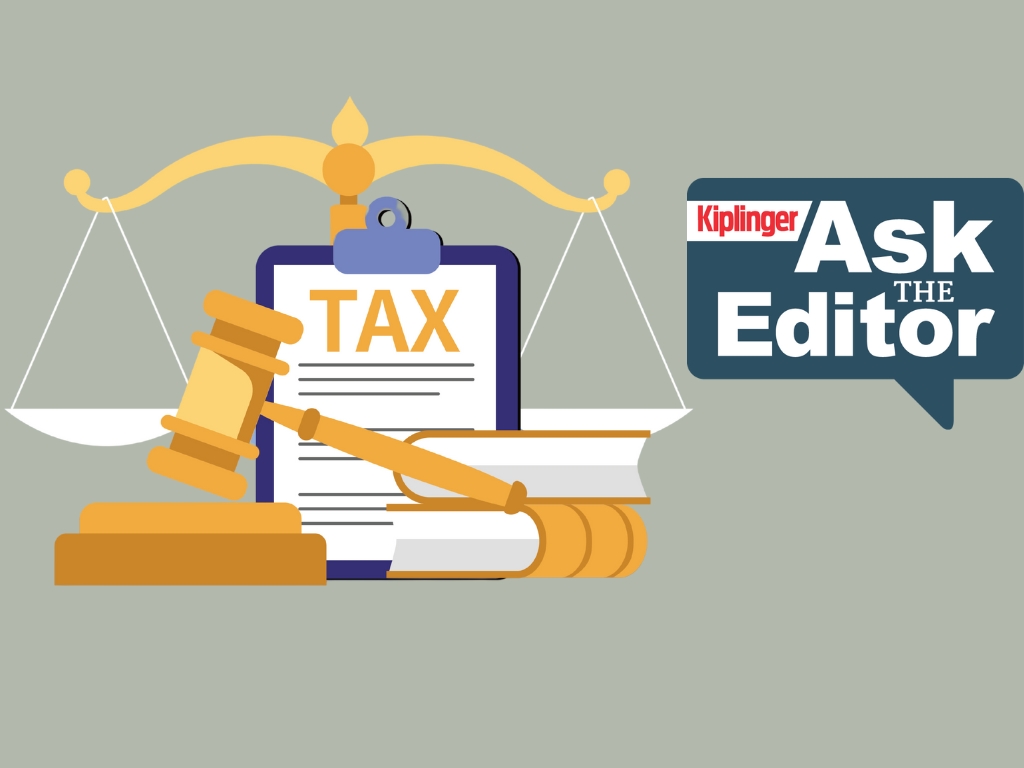What to Do Before the Tax Cuts and Jobs Act Provisions Sunset
Parts of TCJA (also known as the Trump tax cuts) are set to expire by the end of 2025, so the sooner you act, the more options you’ll have to take advantage of today's lower taxes.


The Tax Cuts and Jobs Act (TCJA) of 2017 is currently scheduled to sunset at the end of 2025, meaning significant changes are on the horizon for taxpayers. Now is the time to understand those implications and consider strategies to help mitigate the potential tax risks — and this article can help you get started.
TCJA brought sweeping changes to the tax code for both businesses and individuals. Along with large, permanent tax cuts to corporate profits, the TCJA lowered individual tax rates by restructuring the tax brackets, almost doubled the standard deduction from $13,000 to $24,000, decoupled the income threshold for capital gains taxes from ordinary income tax brackets to benefit higher-income taxpayers and effectively doubled the lifetime gift and estate tax exemption (from $5.6 million to $11.2 million). All these “non-permanent” changes, however, are set to expire on Dec. 31, 2025 — at which point they will revert to pre-TCJA levels.
So, how exactly might this impact your financial plan?

Sign up for Kiplinger’s Free E-Newsletters
Profit and prosper with the best of expert advice on investing, taxes, retirement, personal finance and more - straight to your e-mail.
Profit and prosper with the best of expert advice - straight to your e-mail.
Barring any action on the part of Congress, the window is quickly closing on several of the tax mitigation benefits afforded by the TCJA. Certainly, there remains time to reach an agreement that would extend at least some of these provisions. But through continued political tension and the general unsteadiness of global economies (including the U.S.), this may be an opportune time to explore some of the following strategies.
Estate and gift tax considerations
As of 2023, individuals can currently transfer up to $12.92 million, and a married couple can transfer a total of up to $25.84 million (either during your life or as part of your estate) without triggering federal gift taxes or estate taxes. If no legislative action is taken, however, that historically high exemption amount will be cut in half for the 2026 tax year. As a result, if your taxable estate exceeds the existing exemption amount, some estate planning strategies that may prove beneficial to explore include:
- Annual cash gifts. You are permitted to gift up to $17,000 a year ($34,000 for married couples filing jointly) to as many individuals as you wish. These annual gifts aren’t subject to taxes and don’t count against your lifetime exemption. If you have a large extended family, this can offer an easy way to transfer considerable wealth to the next generation.
- 529 plan accelerated gifts. Current tax law allows you to accelerate five years of gifts to educational accounts for your children and grandchildren (as well as any other friends or relatives). This means you could gift up to $85,000 in a single year ($170,000 for a married couple) to each individual. It’s an ideal way to help them save for future qualified educational expenses (where the funds grow tax-free) while reducing your taxable estate.
- Dynasty trusts. If you haven’t yet used a major chunk of your lifetime gift and estate tax exemption, you may want to consider establishing a dynasty trust. It’s a great way to provide for multiple future generations for as long as state law permits the trust to exist. Any future trust asset income and appreciation can then be transferred between subsequent generations without estate or gift taxes. And by funding the trust with a life insurance policy, you can further increase the trust’s value.
- Irrevocable life insurance trusts (ILITs). Purchasing a survivorship policy owned by an ILIT is one of the most common ways to transfer wealth outside of your taxable estate. In addition, the death benefit paid out to your beneficiaries is income that’s also considered tax-free.
Income and capital gains tax considerations
Since income tax brackets are also slated to revert back to pre-TCJA levels (e.g., the top tax bracket increasing to 39.6% from its current 37%), many wealthier taxpayers can expect a measurable increase in their effective tax rate. In light of this, you may wish to explore opportunities to accelerate income when and where possible over the next couple years to take advantage of the lower brackets, including:
- Converting a traditional IRA to a Roth IRA. Whereas required minimum distributions (RMDs) from traditional IRAs start at age 72 (see note below), taxed as ordinary income and subject to a 10% penalty prior to age 59½, Roth IRAs have no RMDs, and all future growth and distributions are tax-free. By converting your traditional IRA to a Roth before 2026, you pay the income tax liability upfront (potentially at a lower tax rate) rather than at the time of distribution.
- Harvesting capital gains. If you anticipate potentially higher capital gains tax rates in the future, you may want to consider selling some of your highly appreciated securities prior to the expiration of the TCJA. While such sales would produce a taxable gain, it may be less than at some point in the future. And since wash sale rules only apply to harvesting losses (not gains), you could then turn around and repurchase the same securities at a stepped-up cost basis to help reduce future recognized gains while still retaining the investment.
Putting an effective plan in place
While none of us knows what the future holds, as with any form of planning, the more time you have to prepare, the more options you’ll have available to you.
Proper diversification of your assets is regarded as the primary tool for reducing risk without sacrificing return potential. Furthermore, establishing a well-thought-out plan for when it comes time to draw down from your assets for retirement income is vital.
With the help of a tax professional and financial adviser, you can explore strategies to increase your likelihood of controlling future tax liability while maintaining liquidity leading up to and through retirement.
Note: Beginning in 2023, the SECURE 2.0 Act raised the age that you must begin taking RMDs to age 73. According to the IRS, if you reach age 72 in 2023, the required beginning date for your first RMD is April 1, 2025, for 2024. If you reach age 73 in 2023, you were 72 in 2022 and subject to the age 72 RMD rule in effect for 2022. If you reached age 72 in 2022:
- Your first RMD was due by April 1, 2023, based on your account balance on
Dec. 31, 2021.
- Your second RMD is due by Dec. 31, 2023, based on your account balance on
Dec. 31, 2022.
Profit and prosper with the best of Kiplinger's advice on investing, taxes, retirement, personal finance and much more. Delivered daily. Enter your email in the box and click Sign Me Up.

Martin Schamis is the head of wealth planning at Janney Montgomery Scott, a full-service financial services firm, providing comprehensive financial advice and service to individual, corporate and institutional investors. In his current role, he is responsible for the strategic direction of the Wealth Planning Team, supporting more than 850 financial advisers who advise Janney’s private retail client base. Martin is a Certified Financial Planner™ professional.
-
 Ask the Editor — Tax Questions on the New Senior Deduction
Ask the Editor — Tax Questions on the New Senior DeductionAsk the Editor In this week's Ask the Editor Q&A, we answer tax questions from readers on the new $6,000 deduction for taxpayers 65 and older.
-
 These Summer 2025 Back-to-School Tax-Free Weekends Start Now
These Summer 2025 Back-to-School Tax-Free Weekends Start NowSales Tax Over a dozen states offer back-to-school shoppers a sales tax holiday this summer.
-
 Do You Need Flood Insurance? I'm an Insurance Expert, and Here's Where You Can Get It
Do You Need Flood Insurance? I'm an Insurance Expert, and Here's Where You Can Get ItStandard homeowners insurance does not cover flood damage, so you might need separate flood insurance, which you can get either through FEMA or private companies. Here are the details.
-
 I'm an Investment Professional: These Are the Three Money Tips I'm Giving My College Grad
I'm an Investment Professional: These Are the Three Money Tips I'm Giving My College GradCollege grads can help set themselves up for financial independence by focusing on emergency savings, opting into a 401(k) at work (if it's offered) and disciplined, long-term investing.
-
 New SALT Cap Deduction: Unlock Massive Tax Savings with Non-Grantor Trusts
New SALT Cap Deduction: Unlock Massive Tax Savings with Non-Grantor TrustsThe One Big Beautiful Bill Act's increase of the state and local tax (SALT) deduction cap creates an opportunity to use multiple non-grantor trusts to maximize deductions and enhance estate planning.
-
 Know Your ABDs? A Beginner's Guide to Medicare Basics
Know Your ABDs? A Beginner's Guide to Medicare BasicsMedicare is an alphabet soup — and the rules can be just as confusing as the terminology. Conquer the system with this beginner's guide to Parts A, B and D.
-
 I'm an Investment Adviser: Why Playing Defense Can Win the Investing Game
I'm an Investment Adviser: Why Playing Defense Can Win the Investing GameChasing large returns through gold and other alternative investments might be thrilling, but playing defensive 'small ball' with your investments can be a winning formula.
-
 Five Big Beautiful Bill Changes and How Wealthy Retirees Can Benefit
Five Big Beautiful Bill Changes and How Wealthy Retirees Can BenefitHere's how wealthy retirees can plan for the changes in the new tax legislation, including what it means for tax rates, the SALT cap, charitable giving, estate taxes and other deductions and credits.
-
 Portfolio Manager Busts Five Myths About International Investing
Portfolio Manager Busts Five Myths About International InvestingThese common misconceptions lead many investors to overlook international markets, but embracing global diversification can enhance portfolio resilience and unlock long-term growth.
-
 Parents Prepare: Trump's Megabill Brings Three Crucial Tax Changes
Parents Prepare: Trump's Megabill Brings Three Crucial Tax ChangesTax Changes Are you a parent? The so-called ‘One Big Beautiful Bill’ (OBBB) impacts several key tax incentives that can affect your family this year and beyond.